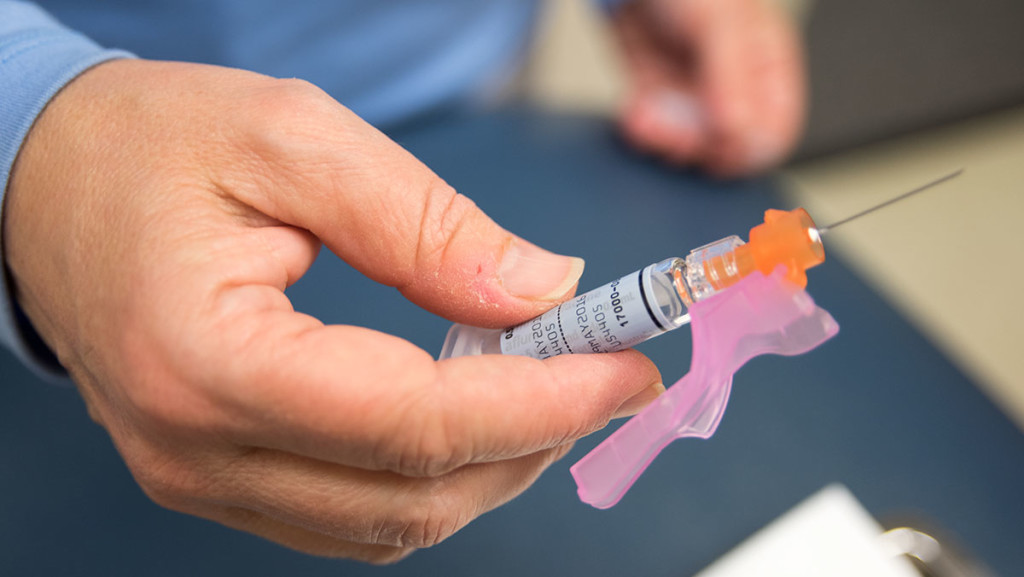This year’s flu season has been relatively moderate compared to previous years, but health officials say students should still take precautions.
Ellyn Sellers-Selin, interim medical director in the Center for Counseling, Health and Wellness, said the Hammond Health Center had 23 patients test positive for the flu from the beginning of Spring 2019 to March 31. She said that this is fewer than the total numbers during previous years, but she emphasized that flu season is still in effect and that the health center may continue to see more flu cases this spring.
She said the health center provides patients that test positive for the flu with information describing their options for treatment. The health center also recommends that students diagnosed with the flu get rest, drink plenty of fluids, monitor their temperature and avoid contact with others to keep the flu from spreading.
In addition to providing treatment, the health center also takes steps toward trying to prevent students from getting sick with the flu by offering them vaccinations. Sellers-Selin said the health center has administered a total of 1,715 vaccinations so far during the 2018–19 academic year. 1,254 of those vaccine recipients were students.
[infogram id=”a1661c31-93c4-4135-b9eb-a0448a15e124″ prefix=”9hR” format=”interactive” title=”Flu Vaccines”]
Interactive by Edie McRoberts, Erin Traut/The Ithacan
Of the student recipients, 46 of the vaccinations were conducted during sports screenings, 472 were conducted at the flu Point of Dispensing (POD), which is an annual event held in the fall for the campus community to get free flu shots, and 736 were administered through the health center clinic.
In addition to the vaccines distributed to students during the last flu POD, the health center also administered six vaccinations to Ithaca College retirees, 10 to Sodexo staff and 445 to college faculty and staff.
The health center advises students to receive flu vaccinations when they are offered on campus, Sellers-Selin said. The vaccine does not completely prevent the flu, but it decreases risks of testing positive for it when flu season starts.
Nanette Scogin, community health nurse at the Tompkins County Health Department, said this year’s flu season was not that different from others. She said that the flu season typically goes from October to the end of June but that the worst of it appears to be nearing an end.
“The peak is almost over, and we are seeing the downside, a steady decline,” Scogin said. “The decrease begins at the end of February and beginning of March.”
Nanette said that as of April 6, there was a 14 percent decrease over previous weeks reporting.
She said one of the differences with this year’s flu season compared to previous years’ is that there have been more cases of influenza A than cases of influenza B.
Influenza A and influenza B are seasonal viruses that occur every winter in the United States. Influenza B is exclusively carried by humans, and influenza A can be carried by both humans and animals. As a result, influenza A typically spreads more rapidly than influenza B.
“The only thing I think is different is that the influenza B is usually more present than influenza A, and that’s unusual,” Scogin said. “There is more influenza A than influenza B.”
Scogin said the first quarter of 2019 reported positive lab results of 663 of influenza A and 19 of influenza B. By comparison, the first quarter of 2018 reported 420 positive lab results of influenza A and 529 of influenza B.
Nanette said the New York State Department of Health collects and analyzes all data that is sent to Tompkins County Health Department during flu season.
Freshman Jillian Grip had the flu and reported it to the health center. It tested Grip for the flu, and before getting her results, she was provided with Mucinex and nasal spray.
After Grip tested positive for the flu, the Hammond Health Center provided her with Tamiflu, an anti-viral medication for flu patients.Grip was advised not to attend classes or go to any of the dining hall until she did not have a fever for 24 hours without medication. Grip said she had the flu for less than a week — approximately five days.








